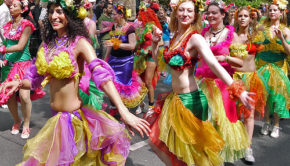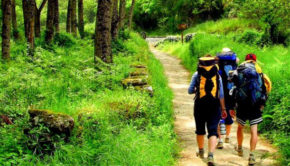Historic Andalusian Cemeteries You Should Visit… Before You Die
Autumn must surely be the best time of year to visit a beautiful cemetery, and not just because Halloween is round the corner. A different kind of sightseeing experience altogether, you can often walk for miles in peace and tranquillity while respectfully appreciating the history, art and architecture on display.
Did you know that Halloween in Spain is not at all the commercial event that it’s become in the USA? Instead, Spanish Halloween is a 3-day celebration to honour the dead and celebrate life, starting on 31st October with the Day of the Witches (Dia de las Brujas), followed by All Saints Day (Dia de Todos los Santos) on 1st November and All Souls Day (Dia de los Muertas) on 2nd November. In a much more mature approach to mortality, it is a tradition for families to congregate at the grave of a deceased relative on All Saints Day to remember them joyfully with flowers, food and drink while tending the grave.
Spanish cemeteries can give you a fascinating glimpse into the country’s cultural traditions as well as interesting insights into the people remembered there. If you’re visiting the southern region of Andalusia, take a look at these sad and beautiful resting places. Many contain intricate sculptures and valuable monuments; all exude an air of serenity that won’t leave your untouched.
English Cemetery (Cementerio del Inglés), Malaga

Set on a hillside near the heart of historic Malaga, the English Cemetery dates back to 1831 and is the oldest non-Catholic Christian cemetery on the Spanish mainland. Its construction came about out of need: a Spanish royal decree prohibited intramural burials which left Protestant English merchants in Andalusia with no appropriate places where they could be buried. When a new British consul arrived in 1824 addressing the issue, a suitable spot was found: a botanical garden overlooking the sea. The site is now a cultural landmark and the seat of the Anglican Church of St George, a classically styled building adapted from the original chapel built in 1840.
A Gothic style gatehouse built in 1856 provides the entrance to the cemetery. Walking around, you will encounter the final resting places of many important figures including the writer Gamel Woolsey, Spanish poet Jorge Guillen, the scholar Gerard Brenan and his wife, and the physician Joseph Noble. Among the old graves and ornate tombstones and sculptures, there’s a great monument dedicated to the family of the British consul, and another commemorating SMS Gneisenau, a German navy ship that sank off the Malagan coast in 1900 with the loss of 450 men.
The English Cemetery is a truly enchanting and picturesque place and well worth a visit. Constructed on several levels among an abundance of exotic plants, you will pass simple graves and tombs, and a wealth of funerary art such as sculptures, monuments and magnificent mausoleums in architectural styles ranging from Classic to Gothic to Modernist and Celtic.
San Sebastian Cemetery (Cementerio San Sebastian), Casabermeja
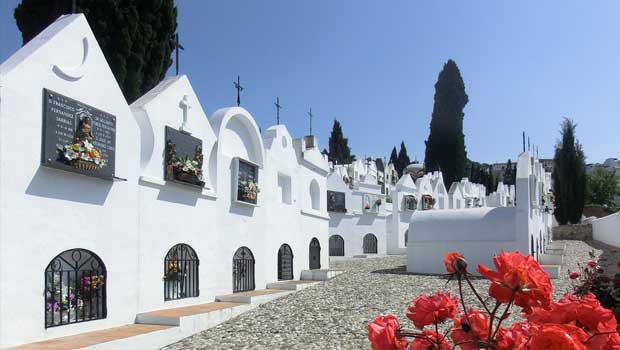
Perched on a hillside offering stunning countryside views, just half an hour’s drive north of Malaga along the A-45 from which it is clearly visible, Casabermeja’s unique cemetery is popularly known as the ‘village of the dead’. That’s because it was designed like a typical Andalusian town: there are neat little facades, narrow streets and squares and everything is meticulously whitewashed and lovingly maintained.
From the roadside, the tombs and mausoleums look like little houses with pitched roofs – giving rise to the myth that the dead were buried here in a vertical position. In actual fact, each grave is shaped like a half cylinder and has a frontispiece showing the name, birth and death dates of the deceased. At the bottom of the frontispiece is a small door through which the body is deposited, while at small cross is placed at the top of each frontispiece.
The unique shape of the tombs as well as the overall picturesque setting makes this cemetery a popular destination for photographers and tourists alike.The cemetery dates back to the 18th century and, due to its originality, has been recognised as being of great cultural significance. It was declared a National Monument in 1980.
San Jose Municipal Cemetery, Granada
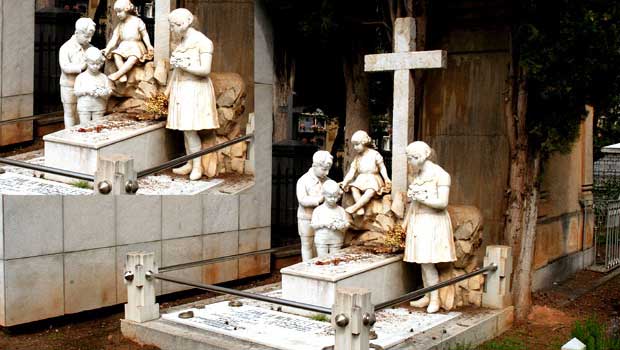
Visit the breathtaking historic site of the Alhambra in Granada and find one of the most beautiful Spanish cemeteries near the entrance to the Nasrid palaces. The present graveyard can be traced back to King Carlos III’s royal decree of 1787 on the use of cemeteries outside settlements.
As you walk through the gardens and pathways, you will come across many significant examples of architecture and funerary artworks from the Romantic period onwards, many created by known and catalogued artists. Head for the Patio de San Cristobal area for archaeological remains of the Alixares Arab Palace of the 13th and 14th century and the small fort and system of channels built by the French at the start of the 19th century.Legends and mystery abound at San Jose, including the ‘Lord of the Cemetery’ and the bride who died on her wedding day who is believed to still be haunting the area unable to find peace.
Castle Cemetery (Castillo Cementerio), Benadalid
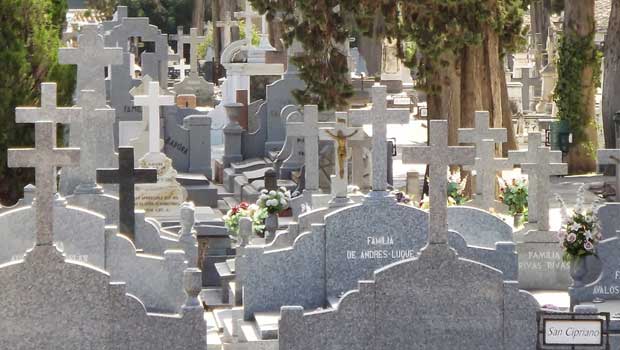
Just over an hour’s drive northwest of Marbella along the AP-7 and AP-377 takes you to the Serrania de Ronda and the graveyard at Benadalid situated just north of the small village. It is set in the old Benadalid castle, which has Roman or possibly Arab origins and could date back as far as the 13th or 14th century. The fortress has a trapezoidal outline, with several cylindrical towers and an underground cistern still preserved. The village cemetery has been located on the interior of the compound since the 19th century, following a popular regional tradition to site graveyards within ancient ruins. It’s a quirky and curious arrangement whereby the tombs are arranged inside, surrounding each tower and stacked in typical Mediterranean fashion.
Finally, if you’re travelling to Cordoba, you may like to know that every year during Halloween the city plays host to the Mundamortis festival, with many events taking place around the theme of ‘death, cemeteries and tourism’. While you’re visiting, make sure you don’t miss Cordoba’s very own resting places – the spectacular Monturque Cemetery featuring underground Roman cisterns, and the neoclassical Cemetery of our Lady or Health (Cementerio de Nuestra Senora de la Salud).




